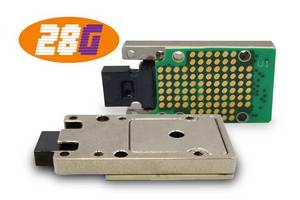New LightABLE Transceivers from Reflex Photonics Offer Interoperability With All Types of Multimode Optical Modules
Press Release Summary:

Reflex Photonics has released a new line of LightABLE rugged transceiver. The transceiver is capable of interoperability with singlelane SFP+ and multiane optical modules such as QSFP. It meets the full operating specifications for single and multilane devices compliant to IEEE802.3xx. The unit is ideal for high performance computing, AESA radars, media adapters, and optical networks for aircraft, ship, and land vehicles.
Original Press Release:
Reflex Photonics LightABLE Transceivers Now Offer Interoperability With All Types of Multimode Optical Modules
Reflex Photonics is proud to announce that its LightABLE™ line of rugged transceivers has demonstrated full interoperability with all types of multimode optical modules.
In tests conducted by Reflex Photonics, the Low Output Power multilane variant of the LightABLE transceivers demonstrated interoperability with single-lane SFP+ and multilane optical modules such as QSFP.
Added flexibility in interconnect design
This addition to the LightABLE family of rugged transceivers is significant for optical interconnect designs, as single-lane devices like SFP+ cannot receive the higher transmission power from multilane devices. With the Low Output Power LightABLE transceivers, there is no need to connect only multilane to multilane devices. Now, one device can connect to any types of optical modules.
Compliance with Standards
Reflex Photonics’ Low Power multilane LightABLE transceivers meets the full operating specifications for single and multilane devices compliant to IEEE802.3xx. They are particularly well suited for the following applications and markets: high performance computing, AESA radars, media adapters, and optical networks for aircraft, ships, and land vehicles.
Reflex Photonics’ V.P. Business Development, Gerald Persaud comments:
"The new Low Power multilane variant of our LightABLE family of transceivers is good news for system designers that have a mix of single and multilane modules in their system. It simplifies optical interconnect design and eliminates errors caused by multilane devices driving excessive power into single-lane devices. In addition, these devices will interoperate with older optical modules that cannot receive the higher transmission power from multilane optical modules."




